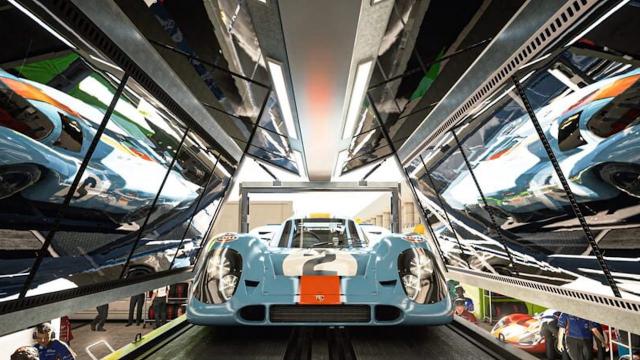It’s fairly common knowledge nowadays that unnecessary microtransactions are, to put it simply, ‘doo-doo arse’. Gran Turismo 7 and its microtransactions are drawing ire for this very reason.
The microtransaction conversation has been ongoing ever since they first appeared. The general consensus is a grudging acceptance under very strict conditions: if the microtransactions don’t meaningfully affect gameplay or provide an advantage, most will put up with their presence. Extra leeway is granted for games that aren’t already sold at a premium price. Under those conditions, players seem more amenable to throwing a bit of extra moolah in the developer’s direction.
So what’s the big stink about Gran Turismo 7?
In Sisi’s article about the game’s poor Metacritic score, they mention Polyphony Digital CEO Kazunori Yamauchi’s statement about microtransactions in Gran Turismo 7, and how “it’s important for [in-game cars] to be linked with the real world prices.” They continue on by calling it a “baffling statement to make since video game cars are fake and Sony can make them cost whatever they want.”
This is true, Sony can do that. Sure, many gamers look to big developers for the next step into realism in games. But is this the kind of “realism” they were thinking of? Could player immersion really be so damaged if a car fails to reflect its real-world price point? Probably not. But Gran Turismo 7 doesn’t seem to care. One of the game’s most vaunted features is that it does in fact attempt to mimic real-world vehicle prices. The rarer or more coveted the car, the higher its price in the game. Of course, Polyphony isn’t going to make a luxury car a single in-game dollar, and that shouldn’t be the expectation. But in trying to implement this real-world car culture into its digital sim, GT7 falls into that trap of charging a premium price and then asking for more.
Another glaring issue comes with the most recent patch. Prior to this patch, players were circumventing the microtransaction route by grinding particularly lucrative races. This let players quickly and efficiently rack up credits they could use to buy cars. Some have noted that the lack of race variety at launch has made this process a pain in the arse, but that wasn’t ever going to stop the die-hards.
Version 1.07, however, nerfs the ability to do this. According to Waypoint, the new patch reduces the payout of several lucrative races “by about a third across the board.” According to VGC, Polyphony has also “fixed” two late-game races that were being used to farm credits due to a bug. In addition, rare and desirable cars that were previously attainable through grinding have had significant price hikes to put them more in line with their real-world counterparts. Basically: the cars are getting more expensive, and the game is being actively tweaked to pay you less.
Pay to win racing
Gran Turismo 7‘s issues strike at the heart of the problem that players have with microtransactions. That they exist is not the issue. Microtransactions can add to games in a positive way without feeling predatory if the systems that support them are designed correctly. Asking you to buy in-game currency with real money is not inherently wrong. However, in the case of Gran Turismo 7, it is deliberately trying to force your hand. Pushing the player to cough up more money by making the accrual of in-game currency that much harder is not a good look at all.
Microtransaction strategies like this can ruin a game. If players have an interest in a game, they will play it. Among those players, there is a subset that will happily grind to get the cooler shit. Gran Turismo has a loyal following happy to run races over and over to get the cars they want because racing is what they already like doing. But it’s now asking those same players to do so much more work to get those cars. When these cars get more expensive and the rewards for races are purposefully reduced, it makes the game feel cheap (despite being the complete opposite).
The bottom line here is simple: Actively placing items attainable through gameplay out of reach while encouraging players to simply buy them with real money as a time-saver invalidates the very idea of Gran Turismo 7‘s in-game economy. Why would people want to play your game for hours on end to achieve something when they could simply pay for the item they want, use that item for a little bit, and then drop it when they get bored? The only party that wins in that scenario is the publisher. The true value of any in-game item comes from what you went through to get it. When you make the value of real money more important than these trials and tribulations, it takes away from the gameplay itself.
It’s a real shame considering Gran Turismo 7 has been hailed as “a glorious return to form for the series“, and it looks quite spectacular. My dad, a big Gran Turismo fan, has said that it “looks great”, and that he likes “how you can steer the car by twisting the controller around.” The meticulously crafted driving model and striking visuals are probably the only things holding the game up at the moment.

Leave a Reply